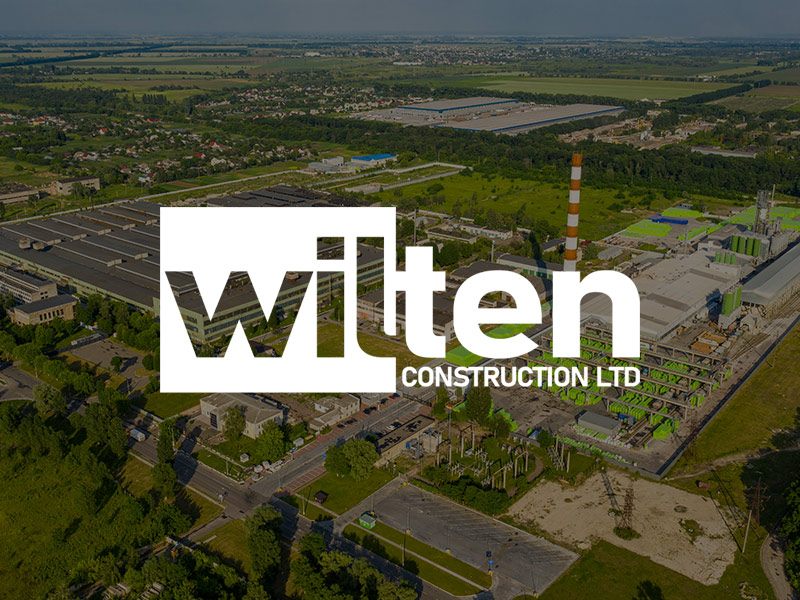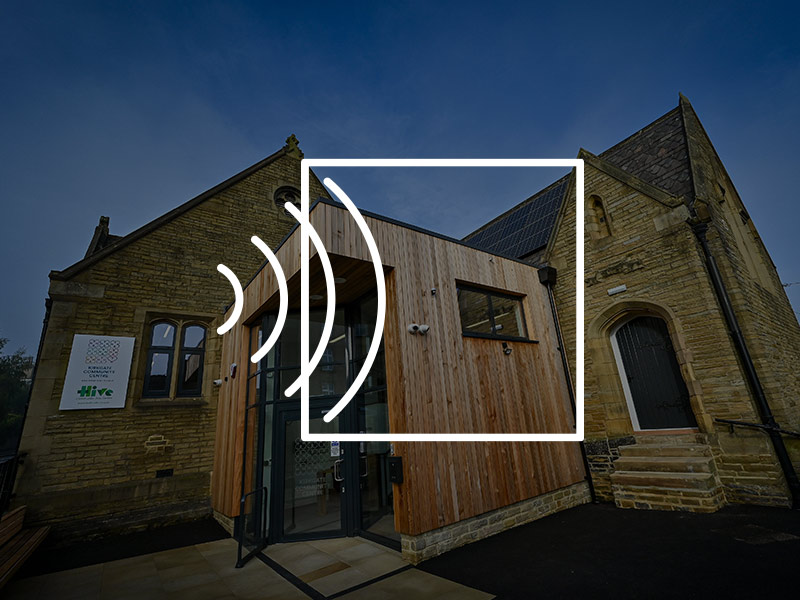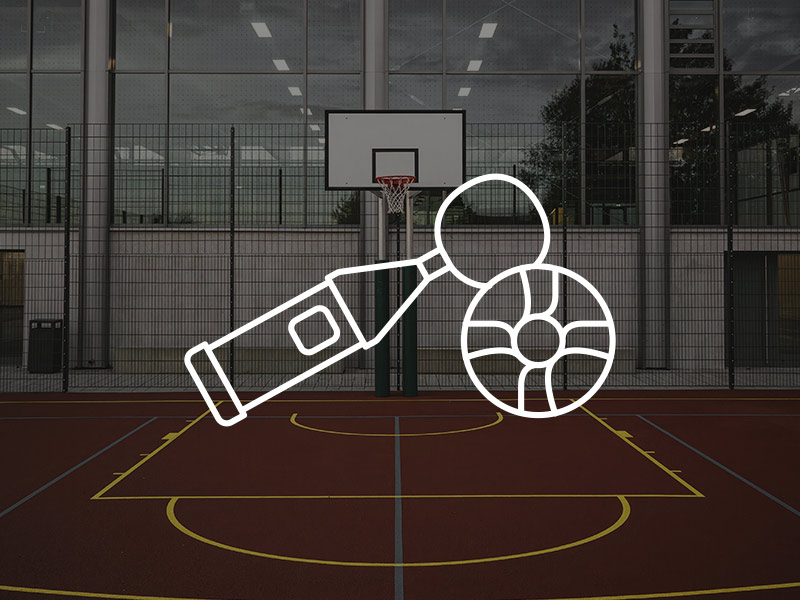Acoustic Consultancy and Design for Breeam HEA05 and POL05.

Workplace Noise Surveys & Assessments
Our expert team has decades of experience assessing workplace noise and ensuring your business stays compliant. Working with us means you’re complying with the Control of Noise at Work Regulations (2005).
At NOVA Acoustics Ltd, We Provide Nationwide Noise At Work Surveys & Assessments
Within the UK, all employers must protect their employees from noise. Employers are required to assess risks to their employee’s health and safety from noise exposure within the workplace.
A workplace noise assessment identifies areas with excess noise and ensures you align with guidelines set by the Health and Safety Executive. It also means you can implement measures that protect employees from physical and emotional health effects.
Our Comprehensive Workplace Noise Risk Assessment Services
The preferred method of assessing this risk is by undertaking Noise at Work Surveys Assessments. Noise testing in the workplace will allow the company to formulate an action plan to reduce employees’ exposure to noise, as required by the regulations. The regulations require measurement of noise and analysis of noise within the workplace and evidence that steps have been taken to prevent and reduce exposure to noise risks.
Pricing and Duration
Our noise-at-work surveys are priced competitively. Pricing and duration vary based on project scope and specific requirements. Contact us for a tailored quote.
We’ve successfully conducted workplace noise assessments for various industries, including manufacturing, construction, and entertainment. Here are a few examples of our work:
Recent Projects
Reverberation Testing, Consultancy, Design and Installation of Acoustic Panelling.
Acoustic Consultancy and Design for RIBA Stages 3 and 4 for redevelopment to form a Hotel.
Client Testimonials
“I plucked this company out of the air and I am so glad I did. Jaime has been most helpful and produced a report within a short time scale. The service has been first class and I have absolutely no hesitation in recommending NOVA acoustics.”
– Arnot Wilson
“We commissioned NOVA to conduct a sound test at our new house. From the get go Adam was incredibly helpful and knowledgeable. It is rare to meet professionals like that, who also go above and beyond to help and guide you through the process.”
– Na’ama Zisser
“The engineer who conducted the testing was friendly, professional and incredibly thorough. Overall I would say that NOVA provided an outstanding service from start to finish and I would not hesitate to recommend them.”
– Joe Bentley
“Really pleased with the service received from NOVA Acoustics on a recent noise risk assessment of our production room. The engineer Tom was great throughout and the report was clear and has made managing our noise control measures simple and effective.”
– Daniel Pontin
“NOVA Acoustics have been beyond helpful. Super speedy response and excellent communication. The noise impact assessment has been completed at a very fair price, and I’m really happy I chose NOVA Acoustics for the job.”
– Kelly Creates
“I used NOVA for acoustic reports for a project I’m working on converting retail units to residential, they was prompt, informative and well priced. I wouldn’t hesitate to use them again.”
– Peter Goldthorpe
“We have used NOVA Acoustics for a sound testing for installation of a new floor. Tom the engineer was very thorough, prompt and professional.”
– Anna Jóga
“Ryan and his team were very professional, installing monitoring equipment regarding a proposed planning application. We can definitely recommend NOVA Acoustics Ltd.”
– Pauline Whittle
Get the Noise Levels Assessed in Your Workplace with our Noise at Work Risk Assessments
Thousands of UK workplaces expose employees to significant yet preventable noise levels, so call us today to ensure you are compliant with the legal requirements. The Control of Noise at Work Regulations 2005 outlines how employers need to prevent and manage excessive noise in the workplace, so you must ensure the measures you have in place are compliant.
Our noise-at-work survey consultants are fully competent and recognised by the Institute of Acoustics. They will conduct a site survey to establish the noise levels your workforce is exposed to. The consultant will undertake an analysis of the noise hazards in your workplace and will establish whether the lower and upper exposure action values are being exceeded. The personal daily dose will be predicted, and measures will be identified to eliminate or reduce risk, control noise exposure and protect employees.
You will receive a technical report analysing the results and presenting recommendations, on appropriate control measures that are to be implemented, including hearing protection, hearing protection zones and health surveillance. The report will plainly and simply outline the employer’s duties and how to comply with the Control of Noise at Work Regulations 2005.
Key Offerings
Site Visit and Baseline Review: Our consultants perform a workplace noise assessment to identify noise sources and measure exposure levels.
Full Design Service: We provide a detailed technical report with recommendations on control measures, such as providing suitable hearing protection and health surveillance and mitigation measures for excessive noise levels.
Technical Noise Survey Report: Our noise survey reports clearly outline employer duties and compliance requirements with the Control of Noise at Work Regulations 2005. We’ll also include key findings from our noise risk assessments, enabling you to implement the advised measures.
Get Your Workplace Noise Levels Assessed
FAQs
When are workplace noise surveys needed?
Occupational noise assessment reports must be undertaken if employees are likely to be exposed to noise at above lower noise exposure action values set out by the HSE. The Control of Noise at Work Regulations 2005 (Noise Regulations 2005) requires employers to prevent or reduce risks to health and safety from exposure to noise at work.
Do You Have a Noise Problem?’; As a simple guide, you will likely require a workplace noise impact assessment if any of the following apply:
1. Is the noise intrusive for most of the working day? Examples could include exposure to noise from a busy street, a vacuum cleaner or a crowded restaurant.
2. Do your employees have to raise their voices to carry out a normal conversation when about 2 m apart for at least part of the day?
3. Do your employees use noisy powered tools or machinery for more than half an hour each day?
4. Do you work in a noisy industry? Examples can include; construction, demolition or road repair, woodworking, plastics processing, engineering, textile manufacture, general fabrication, forging, pressing or stamping, paper or board making, canning or bottling, and foundries.
5. Is there noise due to impacts (such as hammering, drop forging, pneumatic impact tools etc), explosive sources such as cartridge-operated tools or detonators, or guns? Noise can also be a safety hazard at work, interfering with communication and making warnings harder to hear.
What do the regulations require you to do?
The Control of Noise at Work Regulations 2005 (Noise Regulations 2005) requires employers to prevent or reduce risks to health and safety from exposure to noise at work. Employees have duties under the Regulations too.
The Regulations require you as an employer to:
1. Assess the risks to your employees from noise at work;
2. Take action to reduce the noise exposure that produces those risks;
3. Provide your employees with hearing protection if you cannot reduce the noise exposure enough by using other methods;
4. Make sure the legal limits on noise exposure are not exceeded;
5. Provide your employees with information, instruction and training;
6. Carry out health surveillance where there is a health risk.
The Regulations do not apply to:
1. Members of the public exposed to noise from their non-work activities, or making an informed choice to go to noisy places;
2. Low-level noise that is a nuisance but causes no risk of hearing damage.
3. Employers in the music and entertainment sectors have until 6 April 2008 to comply with the Noise Regulations 2005. Meanwhile, they must continue to comply with the Noise at Work Regulations 1989, which the 2005 Regulations replace for all other workplaces.
What are the action levels and limit values?
The Noise Regulations require you to take specific action at certain action values:
1. Lower exposure action values: 80 dB daily/weekly, 135 dB peak sound pressure.
2. Upper exposure action values: 85 dB daily/weekly, 137 dB peak sound pressure.
The values are:
1. Lower exposure action values: Daily or weekly exposure of 80 dB; Peak sound pressure of 135 dB;
2. Upper exposure action values: Daily or weekly exposure of 85 dB; Peak sound pressure of 137 dB.
What are the health effects of noise at work?
If workers are exposed to high noise levels, there’s a real risk of hearing damage. Even short bursts of extremely loud noise or continuous exposure to levels above 80dB(A) can cause noise-induced hearing loss (NIHL) over time.
Noise at work can cause hearing loss that can be temporary or permanent. People often experience temporary deafness after leaving a noisy place. Although hearing recovers within a few hours, this should not be ignored. It is a sign that if you continue to be exposed to the noise your hearing could be permanently damaged. Permanent hearing damage can be caused immediately by sudden, extremely loud, explosive noises, e.g. from guns or cartridge-operated machines.
However, hearing loss is usually gradual because of prolonged noise exposure. It may only be when damage caused by noise over the years combined with hearing loss due to ageing that people realise how deaf they have become. This may mean their family complains about the television being too loud, they cannot keep up with conversations in a group, or they have trouble using the telephone. Eventually, everything becomes muffled and people find it difficult to catch sounds like ‘t’, ‘d’ and ‘s’, so they confuse similar words.
Hearing loss is not the only problem. People may develop tinnitus (ringing, whistling, buzzing or humming in the ears), a distressing condition which can lead to disturbed sleep.
Remember: Young people can be damaged as easily as the old.
How Do I Get Started with Occupational Noise Monitoring?
If you answered ‘yes’ to any of the questions in the section ‘Do you have a noise problem?’, you will need to assess the risks to decide whether further action is needed and plan how you will do it.
Noise risk assessments help you decide what you need to do to ensure the health and safety of your employees who are exposed to noise. It is more than just taking measurements of noise – sometimes measurements may not even be necessary.
Your risk assessment should:
1. Identify where there may be a risk from noise and who is likely to be affected;
2. Contain a reliable estimate of your employees’ exposures, and compare the exposure with the exposure action values and limit values;
3. Identify what you need to do to comply with the law, eg whether noise-control measures or hearing protection are needed, and, if so, where and what type; and
4. Identify any employees who need to be provided with health surveillance and whether any are at particular risk.
How Do I Control the Risk of Noise?
The purpose of the Noise Regulations 2005 is to make sure that people do not suffer damage to their hearing – so controlling noise risks and noise exposure should be where you concentrate your efforts.
Wherever there is noise at work, you should be looking for alternative processes, equipment and/or working methods, which would make the work quieter or mean people are exposed for shorter times.
Workplace noise monitoring helps you identify areas for improvement and ensure your measures keep up with the standards for noise control within your industry.
Where there are reasonably practicable things you can do to reduce risks from noise, that are reasonably practicable, they should be done. However, where noise exposures are below the lower exposure action values, risks are low and so you would only be expected to take actions that are relatively inexpensive and simple to carry out.
Where your occupational noise assessments show that your employees are likely to be exposed at or above the upper exposure action values, you must put in place a planned programme of noise control. How do I use the information from my risk assessment? Your risk assessment will have produced information on the risks and an action plan for controlling noise. Use this information to:
Tackle the immediate risk, e.g. by providing hearing protection.
1. Identify what is possible to control noise, how much reduction could be achieved and what is reasonably practicable.
2. Establish priorities for action and a timetable (eg, consider where there could be immediate benefits, what changes may need to be phased in over a longer period and the number of people exposed to the noise in each case).
3. Assign responsibilities to people to deliver the various parts of the plan.
4. Ensure the work on noise control is carried out.
5. Check that what you have done has worked.
How Do I Reduce Noise?
Noise at work risk assessments enable you to identify the source of your noise and take measures to eliminate it.
There are many ways of reducing noise and noise exposure – often a combination of methods works best. First, think about how to remove the loud noise altogether.
If that is not possible, do all you can to control the noise at the source, consider redesigning the workplace and reorganising working patterns. Take measures to protect individual workers if you need to. Consider the following:
1. Use a different, quieter process or quieter equipment, e.g. Can you do the work in some other quieter way? Can you replace whatever is causing the noise with something less noisy?
2. Introduce a low-noise purchasing policy for machinery and equipment.
3. Introduce engineering controls: o Avoid metal-on-metal impacts, eg line chutes with abrasion-resistant rubber, and reduce drop heights.
4. Vibrating machine panels can be a source of noise – add material to reduce vibration (‘damping’).
5. Isolate vibrating machinery or components from their surroundings, e.g. with anti-vibration mounts or flexible couplings.
6. Fit silencers to air exhausts and blowing nozzles.
7. Modify the paths by which the noise travels through the air to the people exposed, e.g. Erect enclosures around machines to reduce the amount of noise emitted into the workplace or environment.
8. Use barriers and screens to block the direct path of sound.
9. Position noise sources further away from workers.
10. Design and lay out the workplace for low noise emission, eg:
11. Use absorptive materials within the building to reduce reflected sound, e.g. open-cell foam or mineral wool.
12. Keep noisy machinery and processes away from quieter areas.
13. Design the workflow to keep noisy machinery out of areas where people spend most of their time.
14. Limit the time spent in noisy areas – every halving of the time spent in a noisy area will reduce noise exposure by 3 dB. Proper and regular maintenance of machinery and equipment is essential as it will deteriorate with age and can become noisier. Listen out for changes in noise levels – it may be time to replace worn or faulty parts.
Where do We Provide Noise at Work Survey Services?
Our nationwide team of acoustic consultants are here to support you with Health and Safety compliance.
Whether you have a school in Yorkshire or London, student accommodation in Birmingham or Nottingham, an industrial premises in Cambridge or Manchester, a function room opening up in the North West or a manufacturing facility in Leicester or Newcastle… NOVA Acoustics Ltd are very well located throughout the UK to provide a cost-effective solution for your project. Give our acoustic consultants a call for an open and honest discussion about your project with at the most competitive price… wherever you are based.
Our team of acoustic consultants are well located meaning we typically have an Acoustic Consultant within an hour’s drive of your project. Our Acoustic Consultants regularly travel for noise surveying and assessments, sound insulation testing and acoustic design projects, including major cities such as London, Birmingham, Nottingham, Newcastle, Cambridge, Manchester, Sheffield, Leeds, Hull and Liverpool.










